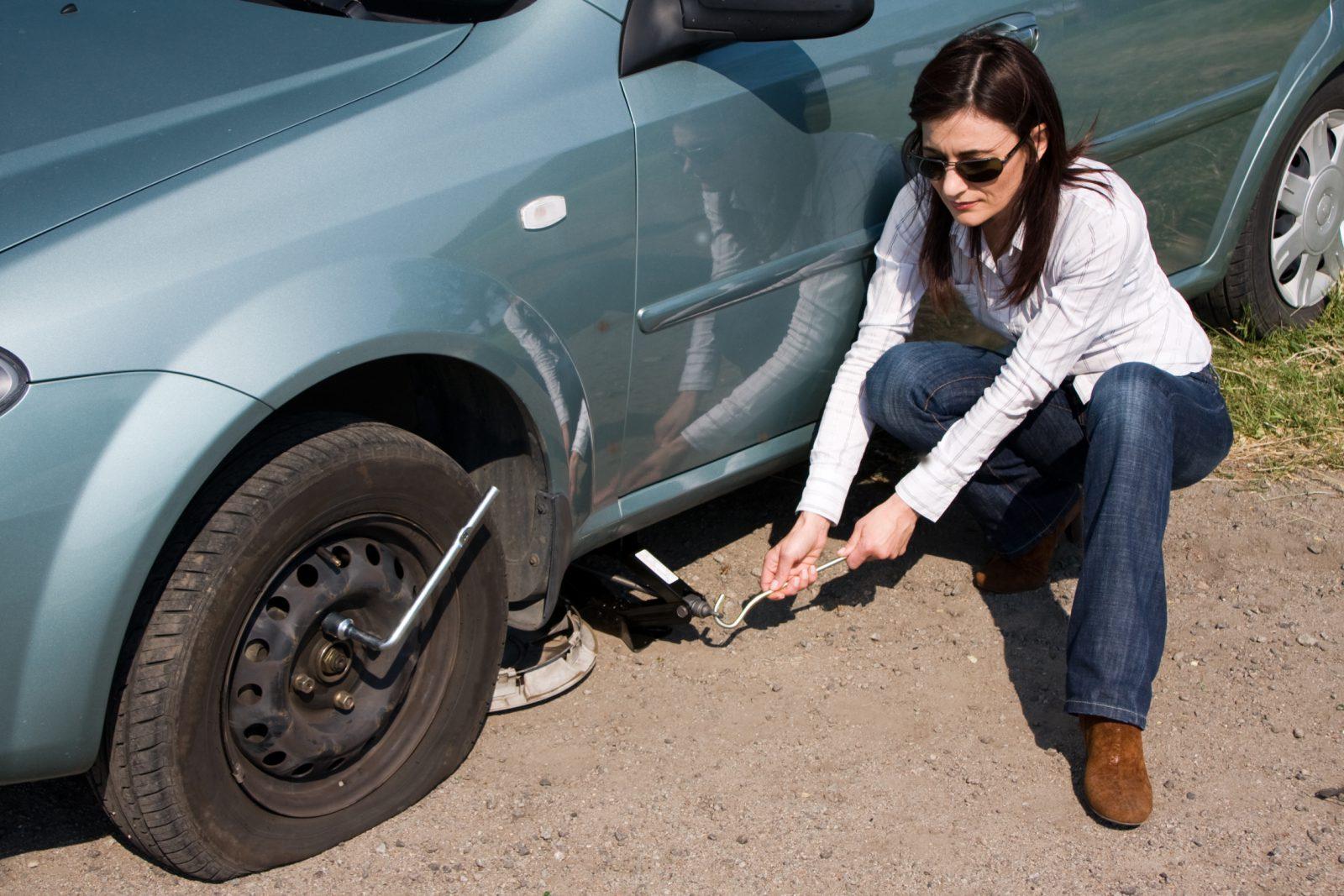If you own a car, it is evident that you will have a loss of tire pressure at least one time or two. However, this incident might be still unknown to many new car owners. For safety reasons, understanding flat tires is very necessary. So what is a flat tire and what damage of driving on a flat tire could bring to the vehicle? Let’s find out in this article below.
Contents
What Happens If You Drive On A Flat Tire?
A flat tire is a tire that is deflated by impact from inside or outside, which will result in loss of control of the vehicle or irreparable damage to the tire wheel. You might be wondering: How can a small problem can result in so many terrible troubles? What will happen if you continue driving on a flat tire?
Harm your tire
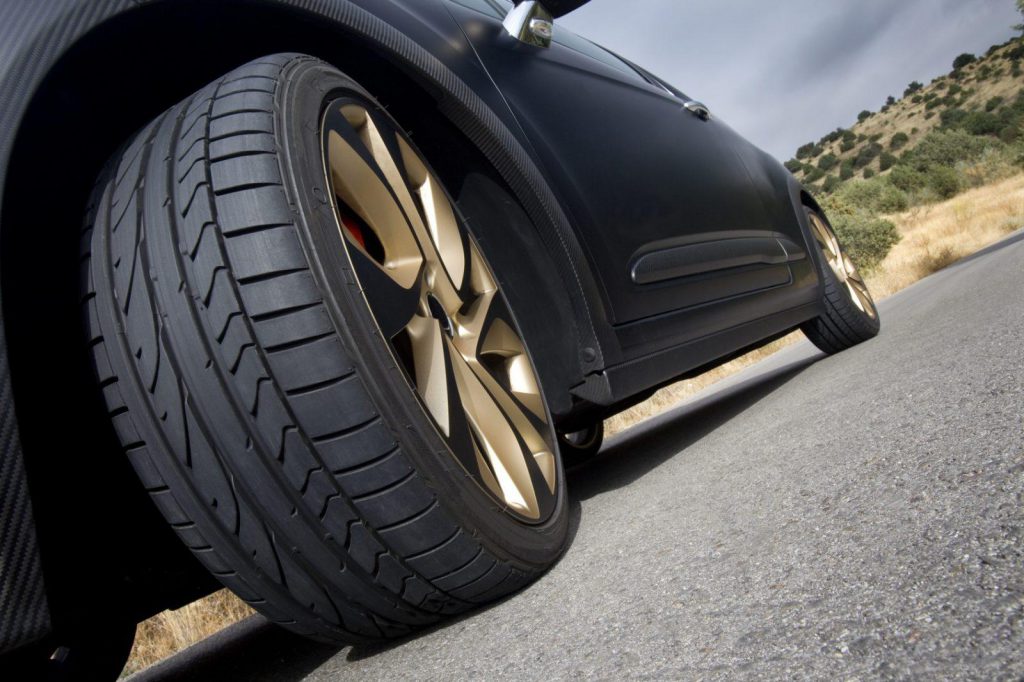
Be honest, some of you might do this already: slowly drive your flat tire car on the road instead of stopping and waiting for help. And this sometimes might not be the best response to your tire.
Since your tire loses a significant amount of air, continuing driving can damage heavily. And the worst part is that you cannot fix it just by pumping the air back. Just like adding oil or coolant cannot fix the engine, car owners will not be able to repair tire damage by filling the air.
The main reason for a flat tire is because it gets punctured by small objects like nails, screws,… This also means that this little hole can be fixed easily. Keep driving on a flat tire, however, will bring more damage to the tire.
Damage to other car parts
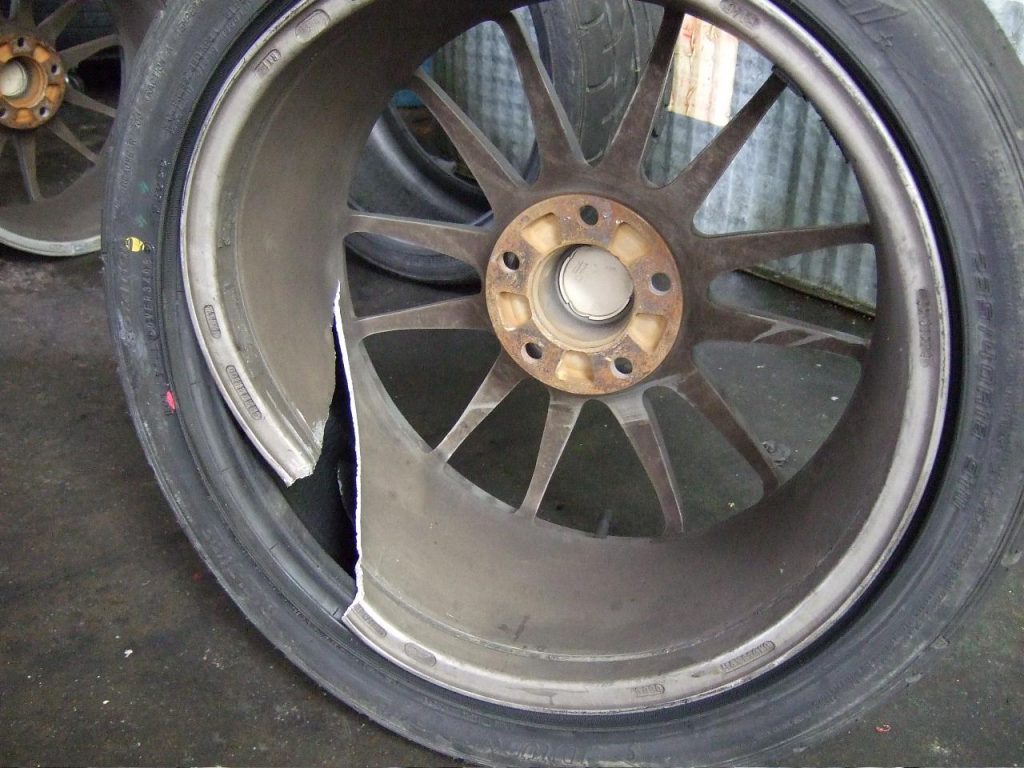
You might understand the outcome of the flat tire itself, but here is the serious part: If drivers keep driving on a flat tire, the flat tire will cause damage to several important vehicle parts and break them. These car parts include the brake system, wheels, fenders, rotors, and even calipers.
In addition, a simple tire patch, which can be repaired at 20 or 30$, can end up costing a thousand dollars.
Bring danger to yourself
For a car owner to keep driving for a long period with a flat tire, could create a danger to himself. If the braking system or any related car parts get broken, it could result in losing control, crashing, and even an accident.
This video will provide you with a better look
Read more:
But in some situations, and only in emergencies, the drivers must continue their driving.
Have you ever driven on a highway and your tires are losing air pressure, along with the fact that there is no place around to stop by? What will you do in that moment? One lucky thing is that a driver can continue driving a short distance before the car is unable to. Even though moving with a flat tire is not recommended since it could damage the tire, sometimes, it cannot be avoided.
Guide To Driving On A Flat Tire
Many car owners ask: How far can you drive on a flat tire? The answer to that question is about 1.497 miles, which is the maximum distance until the rim starts to be damaged. But worry not, with this guideline below, you can bring your dear vehicle to at least somewhere safer while fixing or calling for help, and also reduce the damage caused to your car.
Driving on a flat tire
Step 1: Drive slowly
While driving with a flat tire, don’t you ever think about driving fast in this situation! Speed is the main factor of heavy damage to car wheels and makes drivers lose control. Car owners should maintain the speed at 24 to 32 km/h when the tires are flat until finding a suitable place to replace them.
Driving at high speed will break the wheel core since it creates a stronger force on the wheel, especially without the tire to protect it.
Step 2: Drive on a flat road

When you are driving with a flat tire, it is suggested to stay away from potholes, hills, and broken roads. Bad roads can bend the sharp and destroy car rims. As the tire gets flat, terrible condition of the road can lead drivers to the edge or even worse! Normal roadways or parking lots are the most suitable topographic.
Step 3: Drive straight forward

Don’t go on the road with too many turns. Instead, car owners should go slow, straight, and turn very slightly. Drivers need to pick the straight road when having flat tires, since sharp and sudden turns will create pressure on the car rim.
Car owners must keep the wheel running stable while driving straight to drive easier.
Step 4: Drive to somewhere safe

When you have a chance to pull in, take it now! To avoid risks while driving, especially with an unstable tire, stopping is not a bad choice. The perfect place should be away from the main road and have little transportation. Drivers must make the car stop moving completely, then pull the handbrake and turn on the emergency signal to notice other vehicles.
It is better to not leave the car if you are unsure about the traffic situation outside.
Step 5: Do not drive too far
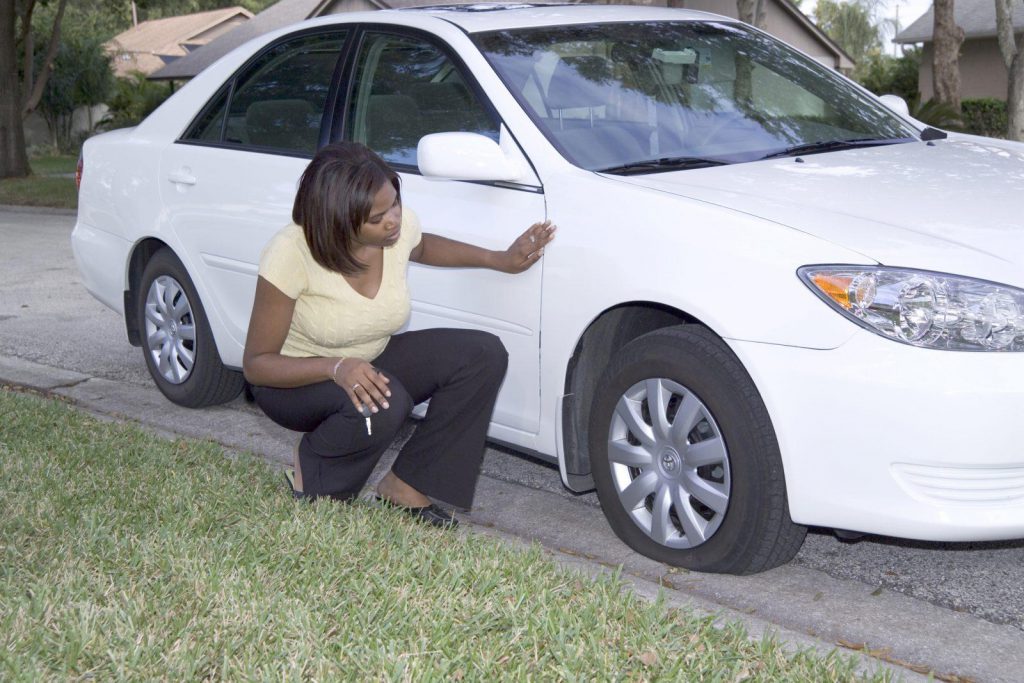
How far can you drive on a flat tire? The answer is not to drive so far. Trying to drive more than 100 km or more when driving with a flat tire is one of the most dangerous things drive must avoid! Even though you might need to go further than that distance to reach the garage, it is suggested to go slow and pull in as soon as possible. This is also to protect yourself from dangers outside the road.
Do not forget that you can change your tire at almost everywhere, so your safety must be your priority.
Read more:
Take care of the tire
Step 1: Find the gas station
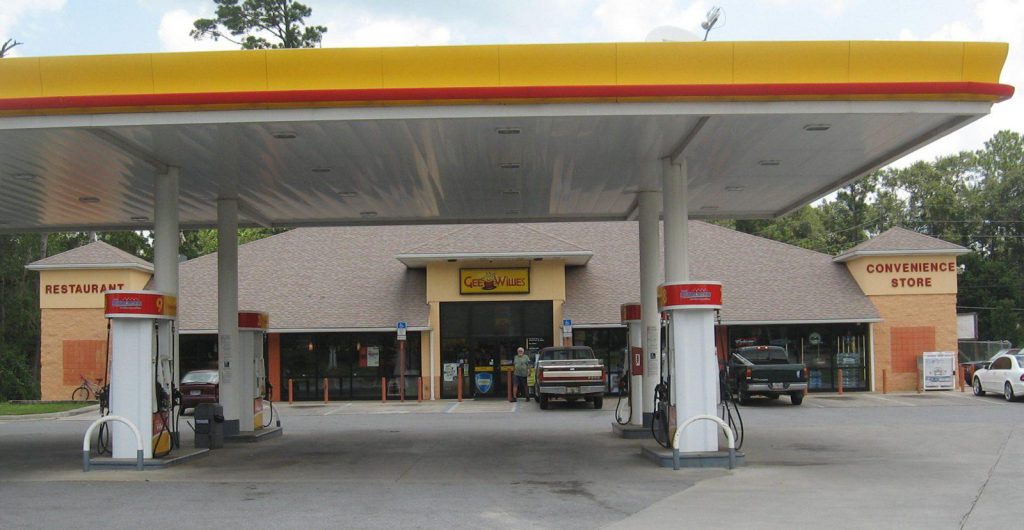
In the situation that you can find a gas station and your tires haven’t broken, you are lucky! In every gas station, there will be some basic fixing tools like tire patches, extra tires,… and many more. The driver can carefully drive to it and ask to pump the tire.
A gas station is one of the few places you can count on while having a flat tire. In some gas stations, the staff are trained to replace tires for broken ones.
Step 2: Use the extra tire
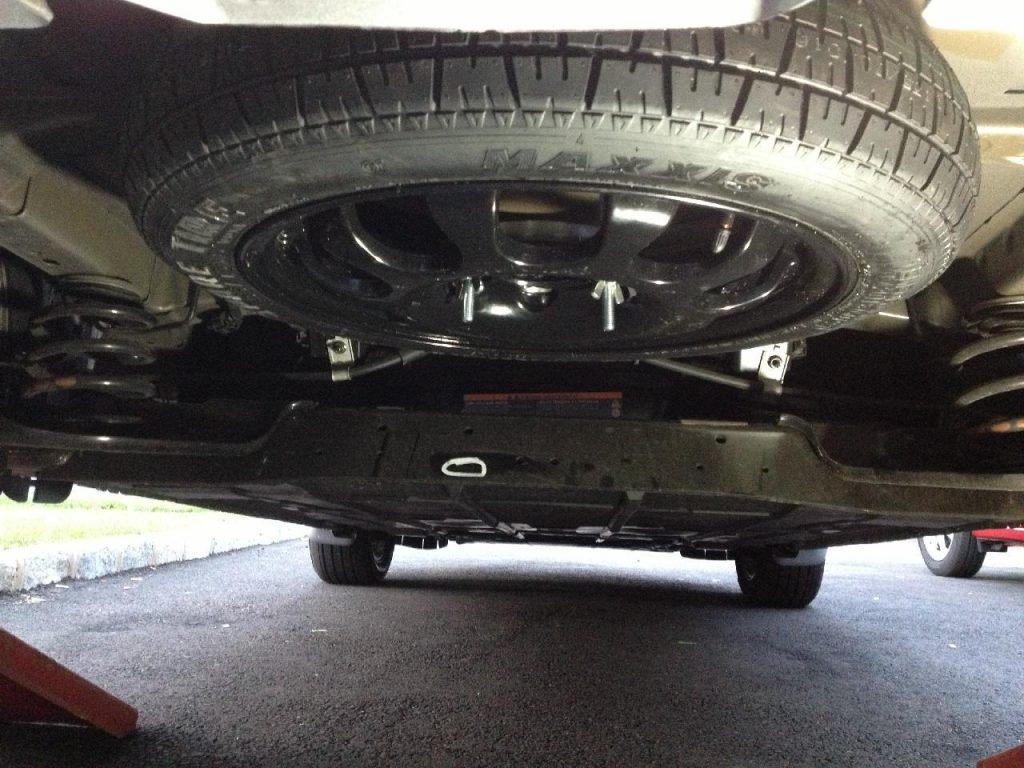
Most modern cars nowadays are equipped with an extra tire behind or inside. If your car also has one, it is the time to use it. All car owners need to do is to change the tire and drive to the garage for complete repair.
Remember, the extra tire can only help drivers to drive their car at a maximum 88 km/h and 80 kilometers.

Step 3: Call the emergency vehicle
If you cannot go to the garage or change the tire by yourself, an emergency vehicle is your best option. The pulling service will come and pull your vehicle to the closest fixing company. In some companies, the staff will come to your place and help change tires right away.
The estimated waiting time for the staff might be about 45 minutes to 1 hour, but if you do not know how to change tire, this amount of time is quite worthy. Also, remember to charge your phone on the way in case of emergency calls.
Step 4: Equip run-flat tire
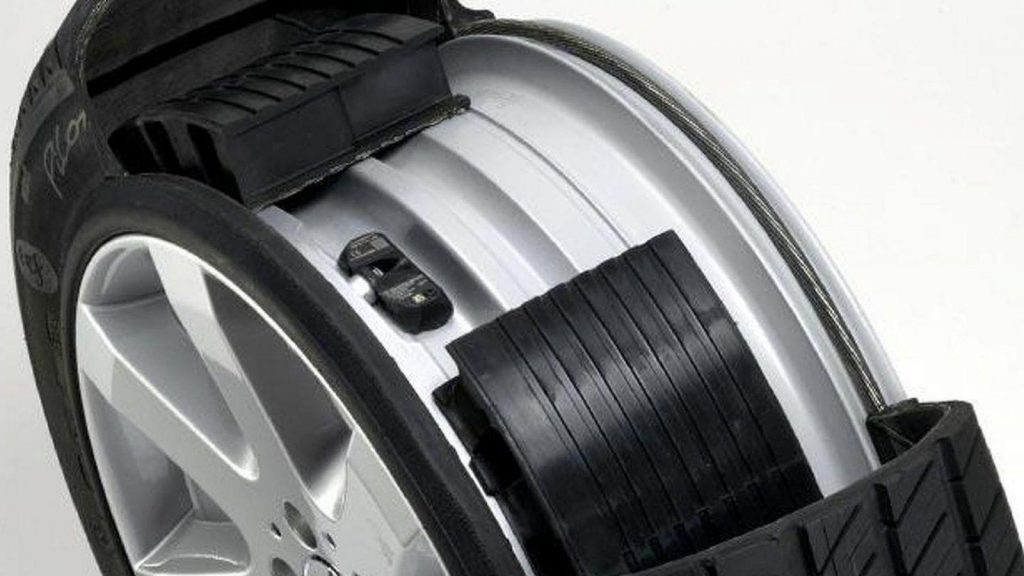
A run-Flat tire is a special tire that is designed to provide safety even when the tire is getting flat. The inside of the Run-flat tire is like a pillow for the wheel, which helps reduce impact when finding a suitable place for changing. These tires allow car owners to drive up to 160 km/h at normal speed until it is flat completely.
Check out how a Run-Flat tire works when it goes flat
How To Avoid The Situation Of Driving On A Flat Tire
To avoid having a flat tire, the best way is to never let them flat in the first place. It is really hard to completely prevent any outside impact, but you can delay flats and extend tire life by these tips:
Buy good tires
Tire shopping is necessary for car owners. For a better driving experience, drivers should pick thick treads, since they are harder and more resistant to punctures and impacts. Even though they are usually more expensive, the benefits they bring are hard to ignore. Run-flat tire is also a good option since drivers can continue to drive while having a flat. And there are certain of worst tire brands you should avoid purchasing to ensure your safety on the road.
Examine your tires before driving
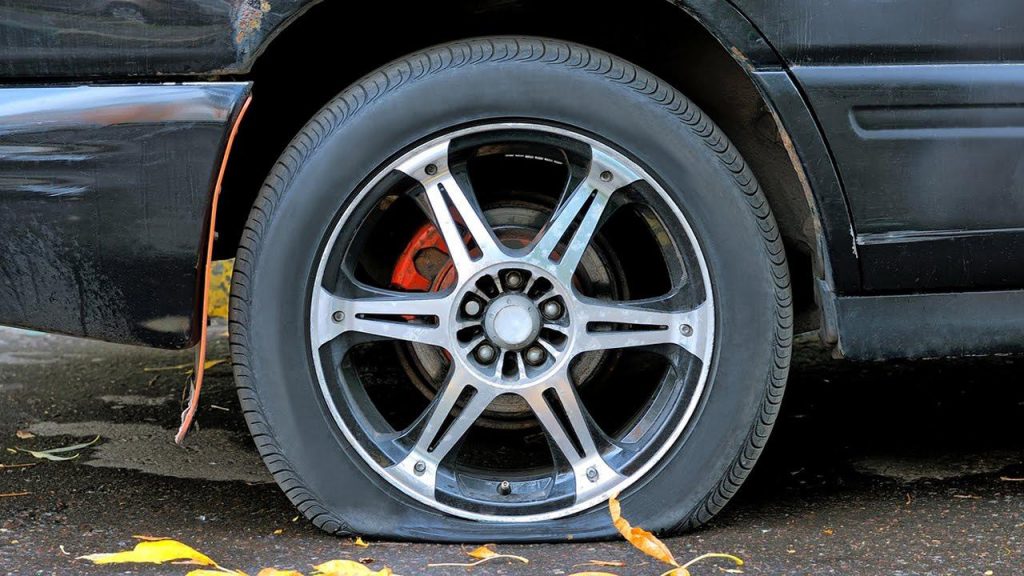
An examination before starting is the key to a successful journey. Tires can be worn out from sudden braking, quick starts, or driving under-inflated, and a worn-out tire is vulnerable to hard road objects.
Tire pressure is another important factor that you should pay attention to. You should also check the tire pressure daily using TPMS to prevent a flat or a blowout, and if there is any unevenly worn tire, it is suggested to replace it with a new one.
Avoid rough roads
You are thinking that this is common sense, however, rough roads and streets usually contain potholes, hard objects like small pieces of wood and steel, screws, and even glass. For that reason, taking another longer but smoother road is a much better choice.
If you have any questions about cars or driving tips, leave a comment for us in the box below, our car experts will answer it for you.

